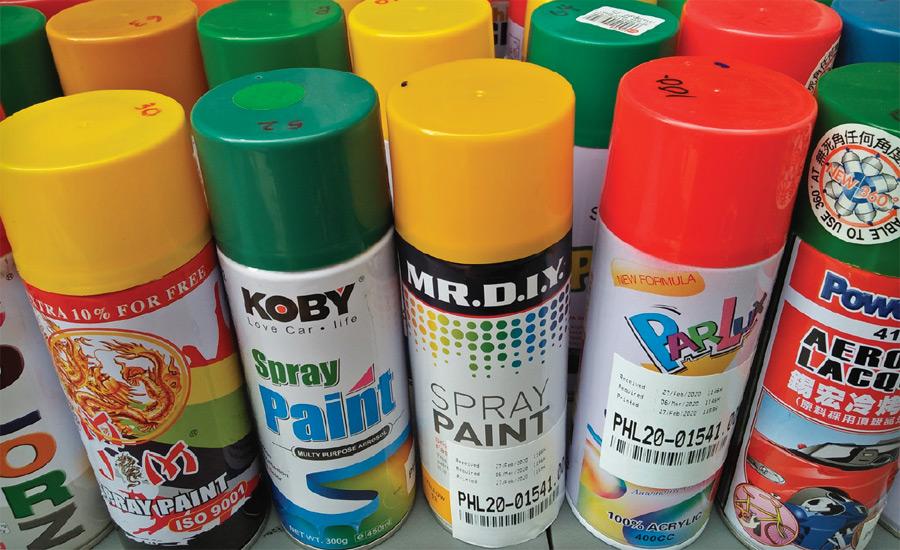Study: 37 spray paint products exceed legal lead content limit
Paint products in aerosol cans that are being sold in the Philippines contain high levels of lead despite an existing ban on lead in paint products, the Ecowaste Coalition, a waste and pollution watchdog reported on Monday.
This prompted the group to call for immediate regulatory action, and reminded consumers to refrain from buying “inadequately labeled” and uncertified paint products.
At the same time, the group also urged spray paint manufacturers, including those that export paints to the Philippines, to obtain third-party Lead Safe Paint certification to help consumers in choosing paints without lead in excess of the 90 parts per million (ppm) limit.
The Philippines is a recipient last June 29 of the coveted Future Policy Award (special category for lead in paint) for being the first country in Southeast Asia to successfully implement a regulation toward lead-safe paint.
Ironically, however, it found out that spray paints can be bought over the counter in malls, paint stores, and hardware stores. They can also be bought online.
In a news statement, the group noted that the Chemical Control Order (CCO) phasing out lead in all paint categories took effecteight years ago.

“We find it very disappointing to find more lead-containing spray paints being sold at retail stores and online shopping sites in violation of the CCO. These decorative paints, which are marketed for general use and are accessible to consumers, should have been phased out on December 31, 2016,” Thony Dizon, Chemical Safety Campaigner, EcoWaste Coalition said.
“The unlawful importation of non-compliant paint products has to stop right away. We urge our Customs, trade, environmental and health regulators to take swift action to prevent children and workers’ exposure to such paints with added lead, a cumulative poison affecting multiple body systems, including the brain and the central nervous system,” said Manny Calonzo, Lead Paint Elimination Campaign Adviser, International Pollutants Elimination Network (IPEN).
The CCO issued by the Department of Environment and Natural Resources (DENR) stipulates a maximum limit of 90 ppm for lead in paint, and sets a three-year period (2013-2016) to phase-out leaded decorative paints and a longer six-year period (2013-2019) for leaded industrial paints.
The EcoWaste Coalition and IPEN contributed to the development of the CCO and had been conducting lead paint studies, public information and policy advocacy activities in pursuit of the country’s shift to non-lead paint production backed by the Philippine Association of Paint Manufacturers (PAPM).
For its latest lead paint investigation, the EcoWaste Coalition in October and November 2021 procured a total of 60 spray paints representing 16 brands that were obtained from online dealers and from various retail stores in 11 cities, including Angeles, Antipolo, Batangas, Calamba, Lucena, Mabalacat, Malolos, Manila, Parañaque, San Fernando, and San Jose del Monte. Costing P55 to P340 each, the samples were mostly imported from China and Thailand.
Laboratory test results confirmed that the 37 samples representing 11 brands contained violative lead concentrations up to 97,100 ppm. Of the 37 samples, 30 had extremely high lead concentrations in excess of 10,000 ppm, and of these 30 samples, 23 had lead above 40,000 ppm.
The remaining seven samples had lead levels between 428 and 4,850 ppm. None of these leaded paints were manufactured by PAPM-affiliated companies.
The lead-containing “Sinag” and “Korona” spray paint samples were even marked “lead-free” or contained a pictogram indicating no Pb (the chemical symbol for lead), the EcoWaste Coalition and IPEN said.
Products labeled as lead-free are giving consumers false assurance about a product’s lead content. The group said such a case of mislabeling points to the importance of third-party certification that will independently confirm compliance to the 90 ppm lead in paint standard.








